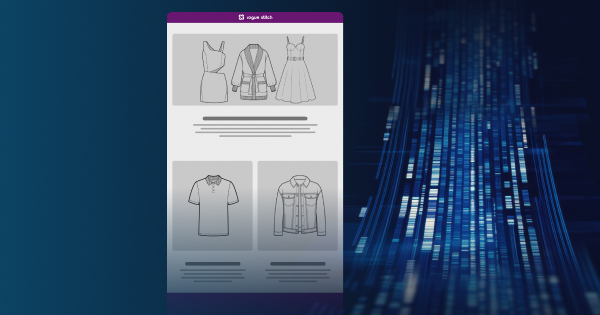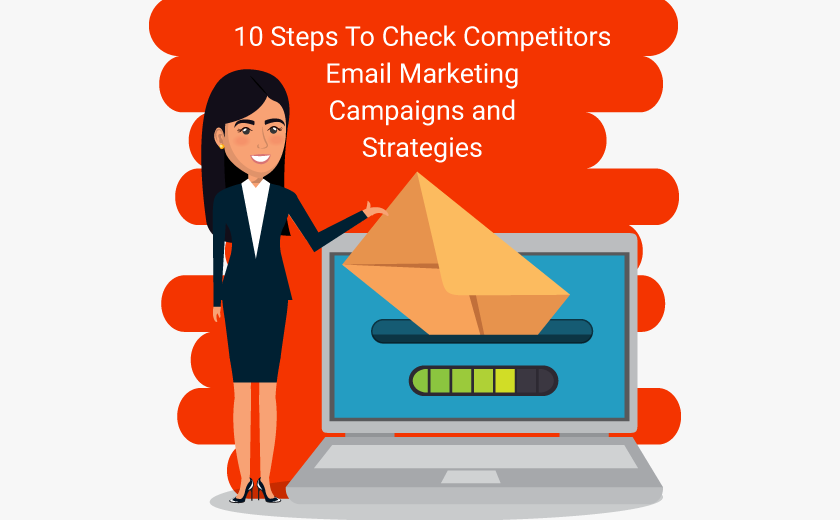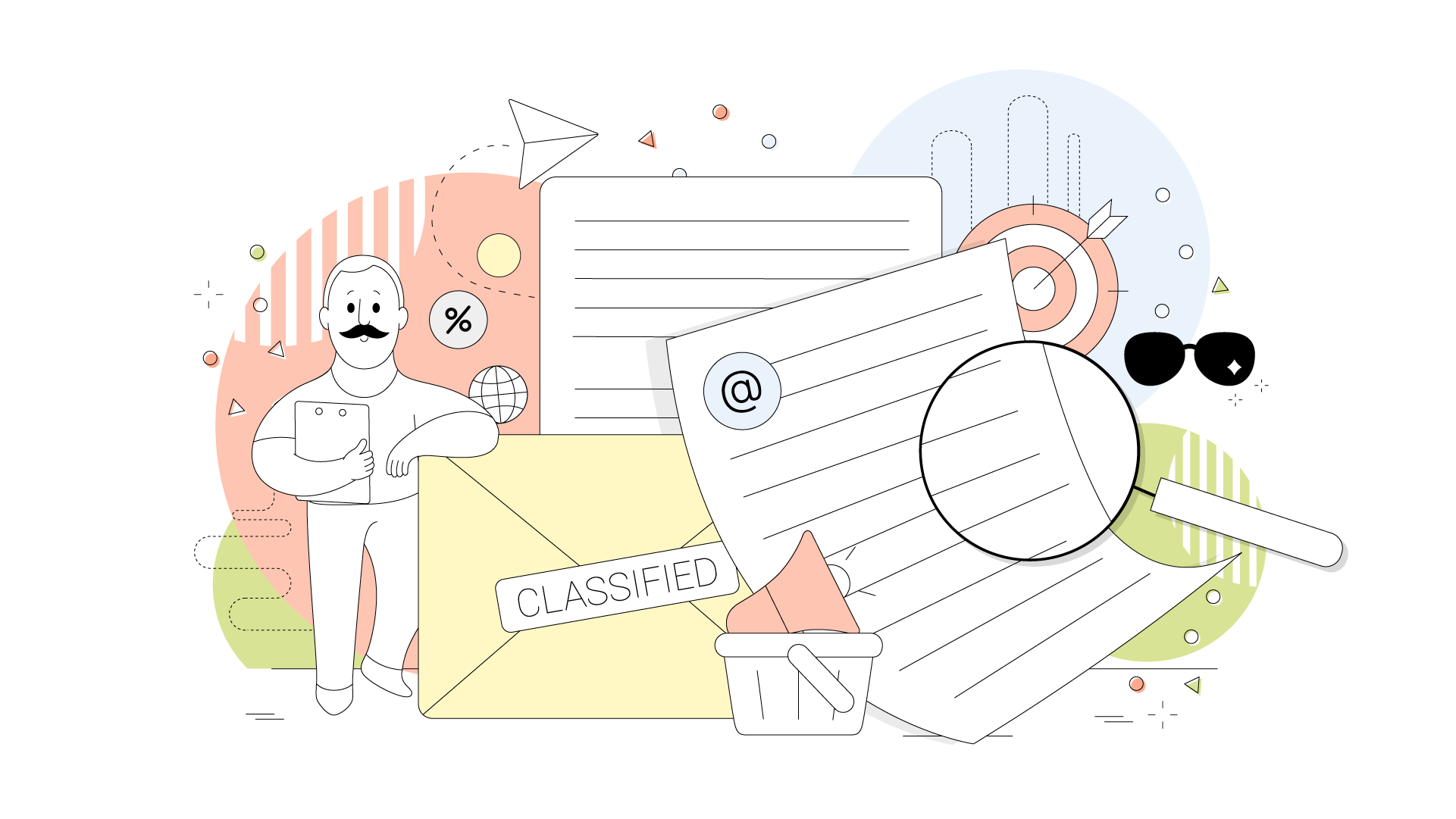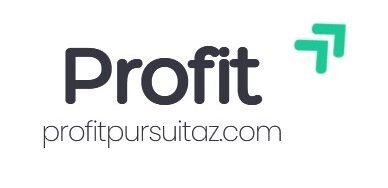How to Check Competitors Email Marketing Campaigns: Expert Tips
To check competitors’ email marketing campaigns, start by subscribing to their newsletters. Analyze the content, frequency, and design of their emails.
This approach helps you gather valuable insights into their strategies. Understanding competitors’ email marketing is crucial for improving your own campaigns. Observing their techniques can reveal trends and ideas you might have missed. By analyzing their emails, you can identify strengths and weaknesses in their approach.
Look at how they engage their audience, the types of content they use, and the timing of their messages. This information can help you refine your strategy and find new ways to connect with your audience. Knowing what works for your competitors can guide you in crafting more effective campaigns. Learn from their successes and avoid their mistakes to boost your email marketing efforts.
Analyzing Competitor Strategies
Email marketing remains a pivotal channel for driving engagement and sales. Understanding how your competitors are navigating this domain can offer valuable insights into enhancing your own strategies. By analyzing competitor strategies, you can uncover tactics that are working well in your industry, identify gaps in your approach, and ultimately boost your campaign effectiveness. Let’s dive deeper into how you can systematically analyze and learn from your competitors’ email marketing campaigns.
Identifying Key Competitors
Before you start dissecting competitor strategies, pinpoint who your key competitors are. This may include industry leaders, emerging brands, or even niche players that are gaining traction.
Begin by examining your market landscape. Look at companies that consistently rank well in search results, boast significant social media followings, or have high customer engagement rates.
Once identified, subscribe to their newsletters or promotional emails. This will give you direct insight into their communication style and frequency.
Understanding Their Email Tactics
Now that you have access to competitor emails, scrutinize their content. What type of subject lines are they using? Are they catchy and personalized?
Pay attention to the layout and design. Do their emails have a clean, professional look? Is the call to action clear and compelling?
Consider the timing and frequency of their emails. Are they sending weekly updates or monthly newsletters? How do their sending patterns compare to your own?
Think about the type of value they are offering. Are they sharing useful information, exclusive offers, or engaging storytelling? What resonates most with you as a potential customer?
Reflect on your findings and consider how you can adapt successful elements into your own campaigns. Tailor them to fit your brand voice and audience preferences.
Remember, analyzing competitors isn’t about imitation. It’s about inspiration. How can you stand out by leveraging lessons learned from their strategies?
Engage with your audience by asking them questions and seeking feedback. What do they appreciate in email communications? How can you better serve them?
The insights you gain from analyzing competitors can be transformative. They can shift your perspective, spark creativity, and ultimately help you refine your email marketing strategy to better meet the needs of your audience.
Gathering Competitive Intelligence
Gathering competitive intelligence is crucial for staying ahead in the email marketing game. Understanding what your competitors are up to can provide valuable insights, helping you refine your strategies and connect better with your audience. But how do you effectively gather this intelligence without feeling overwhelmed or intrusive? Let’s dive into some practical methods.
Using Email Monitoring Tools
Email monitoring tools are like having a backstage pass to your competitor’s email campaigns. These tools allow you to track the frequency, content, and style of emails that your competitors send out. You can analyze elements like subject lines, call-to-action buttons, and visual design.
Tools like Mailcharts and Owletter can offer a treasure trove of information. They can alert you to new campaigns and even track changes over time. Imagine spotting a trend before it becomes mainstream—how powerful would that be for your brand?
It’s not just about copying what works for others; it’s about understanding why it works. By dissecting your competitor’s emails, you can learn what resonates with their audience and adapt those elements to your strategy.
Leveraging Social Media Insights
Social media platforms can be a goldmine for gathering email marketing intelligence. Brands often tease their email campaigns on social media to generate buzz. You can keep an eye on their social media activities to get a sense of their email marketing schedule and content themes.
Platforms like Facebook and Twitter allow you to see how audiences are interacting with these teasers. Are there lots of likes and shares, or is the response lukewarm? This feedback can give you clues about what might work in your campaigns.
Have you ever noticed a competitor’s campaign gaining traction on social media and wondered why? Perhaps they used a catchy hashtag or collaborated with an influencer. Think about how you can apply similar tactics to your email strategy.
Gathering competitive intelligence is not about imitating your competitors. It’s about learning from them and using those insights to craft a unique voice that resonates with your audience. Are you ready to take a deeper look into your competitor’s email strategies and uncover opportunities for your brand?
Evaluating Content And Design
Explore competitor email campaigns by assessing their content and design. Observe subject lines, visuals, and engagement strategies. Notice how they structure messages and use calls to action. Evaluate the balance of text and images to understand their appeal. This analysis can offer insights for your own campaigns.
When you want to understand your competitors’ email marketing strategies, evaluating their content and design is essential. This process helps you identify what works well and what you can improve in your campaigns. By examining the visual appeal and content quality, you can gain valuable insights that drive engagement and conversions.Assessing Visual Appeal
Visual elements play a crucial role in grabbing attention. Think about the emails that catch your eye—what makes them stand out? Colors, fonts, and layout contribute significantly to an email’s attractiveness. Look at your competitors’ emails and note the consistency in their branding. Is their logo prominently displayed? Are they using high-quality images that enhance the message? Pay attention to the overall structure. A clean, organized layout often leads to better readability. Consider the balance between text and visuals. Are there too many images that slow down loading times, or are they using just the right amount?Analyzing Content Quality
Content is the backbone of any email campaign. It’s not just about what is being said, but how it’s being communicated. Are your competitors using a friendly tone that resonates with their audience? Examine the subject lines and call-to-action phrases. Are they compelling and clear? An engaging subject line can make the difference between an opened email and one that is ignored. Look at the value they offer. Are they providing useful information, exclusive deals, or engaging stories? Quality content keeps subscribers interested and encourages them to take action. What lessons can you take from their content strategies to improve your own? Remember, it’s not about copying but learning and adapting to better meet your audience’s needs.
Credit: edited.com
Understanding Target Audience
Analyzing competitors’ email marketing can reveal insights about target audiences. Examine their subject lines, content themes, and frequency to understand strategies. Observing engagement levels and subscriber interactions helps in refining your own approach for better connection.
Understanding your target audience is crucial when analyzing competitors’ email marketing campaigns. Knowing who they are and what they want helps you craft messages that resonate. It’s like having a secret map that guides your strategy. Let’s dive into how demographics, preferences, and engagement patterns play a vital role in this understanding.Demographics And Preferences
Demographics provide insights into who your audience is. This includes age, gender, location, and income level. Knowing these aspects helps tailor your messaging to match their lives. Consider preferences such as shopping habits or favorite products. What are they buying? What content are they sharing? Understanding these preferences allows you to align your offers with their interests. Are your competitors targeting a similar demographic? If so, what unique angles can you adopt? Observing these elements helps you identify gaps in the market to exploit.Engagement Patterns
Engagement patterns reveal how your audience interacts with content. Do they open emails in the morning or late at night? Are they more likely to click on visuals or text links? Tracking these behaviors gives you a blueprint for scheduling your campaigns. For instance, if your audience responds better to weekend emails, adjust your sending times accordingly. You can also analyze competitors’ email frequency and content types. Are they sending weekly newsletters or monthly updates? What formats do they use? Adapting successful patterns can increase your own engagement rates. Understanding your target audience involves paying close attention to these elements. How well do you know your audience’s demographics and engagement habits? Use these insights to outpace your competition and enhance your email marketing success.Studying Email Frequency And Timing
Email marketing is a powerful tool for businesses. Understanding your competitors’ strategies can offer insights. One crucial aspect is their email frequency and timing. This knowledge can guide your own email marketing efforts. It can improve customer engagement and retention. Let’s dive into how you can study these elements effectively.
Determining Optimal Send Times
Finding the right time to send emails is essential. Analyze the send times of your competitors. Notice any patterns in their scheduling. Do they send emails during weekdays or weekends? Morning or evening? This information can reveal trends. It can help you choose the best times for your audience. Consider the habits of your target demographic. Align your send times with their online activity.
Frequency Analysis
Understanding how often competitors send emails is key. Too many emails can overwhelm subscribers. Too few can result in missed opportunities. Observe your competitors’ email frequency. Are they sending daily, weekly, or monthly? Analyze the engagement rates of their campaigns. High engagement can indicate successful frequency. Use this information to guide your own strategy. Adjust your email frequency to match your audience’s needs.

Credit: martechpulse.com
Exploring Subject Line Strategies
Explore subject line strategies by analyzing your competitors’ email marketing campaigns. Spot trends, understand their tactics, and refine your approach for better engagement. Learn what works and what doesn’t to enhance your own email strategy.
Exploring subject line strategies in email marketing reveals many insights. Competitors’ emails offer a wealth of knowledge. Understanding their techniques can enhance your campaigns. Subject lines are crucial for capturing attention. They determine if an email gets opened. Dive into key strategies to refine your approach.Identifying Effective Keywords
Subject lines often rely on keywords. These words connect with the audience. They trigger curiosity and interest. Analyze competitors’ emails for recurring keywords. Note the ones that appear frequently. Effective keywords often align with trends. They reflect what matters to the audience. Look for action words. They encourage engagement. Verbs often drive the reader to act. Keywords that evoke emotion are powerful. They create a connection with the reader.Analyzing Engagement Metrics
Engagement metrics provide valuable insights. They reveal how audiences respond to subject lines. High open rates signal effective strategies. Low open rates suggest room for improvement. Consider the timing of emails. Time influences engagement levels. Day and hour impact open rates. Study competitors’ metrics if accessible. Compare their performance to industry standards. These metrics guide your strategy refinement. Positive engagement reflects successful subject lines. Low engagement indicates a need for adjustment. Metrics help you learn from competitors. They inform your future campaigns.Assessing Call To Action Techniques
Evaluating call-to-action techniques involves studying competitors’ email marketing strategies. Analyze their subject lines, design elements, and engagement tactics. By understanding their approaches, you can refine your own campaigns for better audience connection.
Assessing Call to Action Techniques is pivotal in understanding your competitors’ email marketing strategies. Every email campaign aims to drive specific actions from recipients, whether it’s clicking a link, making a purchase, or signing up for a newsletter. By dissecting how your competitors craft their Calls to Action (CTAs), you can uncover what works and what doesn’t, ultimately refining your own strategies. ###Evaluating Cta Effectiveness
Start by examining the language your competitors use in their CTAs. Are they using direct commands like “Buy Now” or more subtle suggestions such as “Learn More”? The wording can significantly impact how recipients respond. Consider the placement and design of CTAs in the email. A brightly colored button in the center might catch the eye more than a simple text link at the bottom. Take note of what seems to draw attention and what blends into the background. Observe the frequency of CTAs within a single email. Do they repeat the call to action multiple times or rely on a single, strong prompt? Each approach has its own merits, and understanding these can inspire new strategies for your campaigns. ###Exploring Conversion Rates
Conversion rates provide a clear indicator of a CTA’s success. If a competitor’s campaign boasts high conversion rates, it’s worth analyzing their techniques closely. Are they offering irresistible deals or exclusive content that drives action? Try signing up for their newsletters or engaging with their CTAs to experience the process firsthand. This insider perspective can reveal hurdles or incentives that influence conversion rates. Reflect on your own experiences. Have you ever clicked through a competitor’s email? What drew you in or held you back? Your personal insights can be invaluable in understanding what makes a CTA compelling or forgettable. By focusing on these practical insights, you can craft CTAs that not only capture attention but also drive the desired actions from your audience. What changes will you make to enhance your email marketing strategy?Learning From Competitive Campaigns
Analyzing competitor email marketing can offer valuable insights. Observe their subject lines, design, and timing for inspiration. This helps refine your strategies and improve engagement.
Learning from competitive campaigns is like having a backstage pass to your rival’s strategies. Observing their email marketing tactics can provide valuable insights into what works and what doesn’t. By examining these campaigns, you can refine your own strategies, avoid common mistakes, and discover innovative approaches that could set you apart in the industry.Adapting Successful Tactics
When you spot a competitor’s email campaign that resonates with their audience, consider why it works. Is it the engaging subject line, the compelling call-to-action, or perhaps the timing of the emails? Take notes on these elements and test similar approaches with your audience. A/B testing can be a powerful tool here. For instance, if a competitor’s email with a “limited-time offer” subject line seems effective, try it in your next campaign and measure the results. Adapting their successful tactics can give you a competitive edge.Avoiding Common Pitfalls
Observing competitors also helps you spot their missteps. Did they send too many emails and overwhelm their subscribers? Or perhaps they failed to segment their audience effectively, resulting in irrelevant content being sent. By identifying these pitfalls, you can sidestep them in your campaigns. Reflect on your own experiences too. Have you ever unsubscribed from a mailing list? Why? Use those insights to avoid similar mistakes in your strategy. This proactive approach not only protects your brand but enhances your relationship with your audience. Engaging with competitive campaigns is not just about imitation, but innovation. What unique twist can you add to a successful tactic? How can you ensure you’re not repeating their errors? By asking these questions, you can craft more effective and personalized email marketing strategies.
Credit: www.hostpapa.com
Frequently Asked Questions
How Can I Find Competitor Email Campaigns?
Use email marketing tools to monitor competitor campaigns. Tools like MailCharts or Owletter can track emails. Sign up for competitor newsletters to see their strategies. Analyze the design, content, and frequency for insights. This helps enhance your own campaigns by learning from successful tactics.
What Tools Track Competitor Emails Effectively?
MailCharts and Owletter are great tools for tracking competitor emails. They provide insights into frequency, design, and content. These tools help you understand competitors’ strategies and optimize your own campaigns. By analyzing this data, you can improve your email marketing tactics and stay ahead in the industry.
Why Analyze Competitor Email Marketing Campaigns?
Analyzing competitor campaigns reveals industry trends and strategies. It helps identify successful tactics and potential gaps in the market. This knowledge allows you to refine your own email marketing approach. By understanding competitors, you can enhance your campaigns and attract more subscribers effectively.
Can Competitor Email Strategies Boost My Campaigns?
Yes, competitor strategies can significantly boost your campaigns. By learning from their success, you can adopt effective tactics. Analyze their content, design, and engagement strategies. This helps optimize your own emails, increase engagement, and improve conversion rates. Competitor insights are valuable for enhancing your marketing efforts.
Conclusion
Exploring your competitors’ email marketing can offer valuable insights. Analyze their strategies to understand what works. Take note of their subject lines and design. Observe the frequency of their emails. This helps you identify trends and preferences. Use these insights to refine your own campaigns.
Keep learning and adapting to stay competitive. Remember, understanding your competitors is a continuous process. Stay informed and apply new ideas. Your email marketing can improve with consistent effort and observation. Keep your audience engaged and satisfied with thoughtful strategies.
